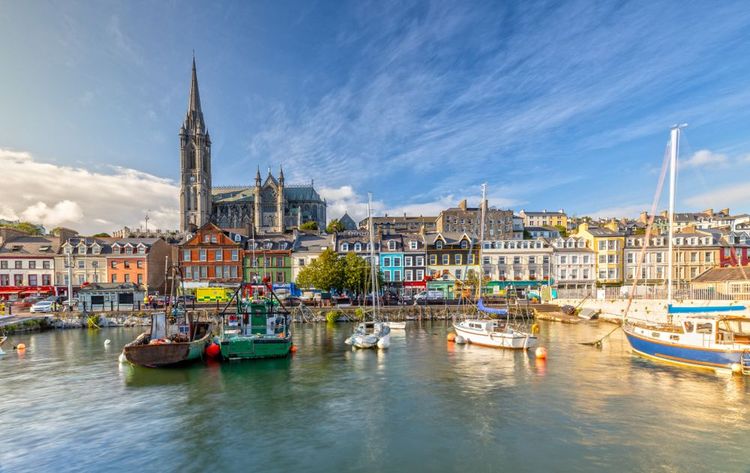The Rock of Cashel’s origins are rooted in myth. It is said that after St Patrick expelled Satan from the Devil’s Bit, a mountain situated about 20 miles north of Cashel, a piece of the mountain landed in Cashel and made the rock we know today. The Rock was the seat of the kings of Munster and St Patrick himself is said to have converted king Aenghus to Christianity in this very place. Brian Boru was crowned High King in 978 at the site and made it his capital. His grandson, king Muirchertach Ua Briain donated the rock, by then a well advanced and fully developed fortress, to the Church in 1011. Cashel then gained significant importance as an ecclesiastical stronghold. With a more than impressive collection of medieval and celtic art and architecture, what’s most surprising about the rock is how well the various buildings have been preserved. Most of the builds we see today at the rock date back to the 12th and 13th centuries.
Like something pulled straight out of a Hans Christian Anderson fairytale, the Rock of Cashel is undoubtedly Ireland’s dreamiest and most enchanting site. Sometimes referred to as the “high king of irish monuments”, the cluster of medieval builds is set atop an outcrop of limestone in the Golden Vale and seems to completely dominate the area. With its haunting gothic architecture, dramatic hollowed presence and unshakeable sense of history, the site has fascinated visitors for centuries. A staple in any Ireland itinerary, it isn’t hard to see why so many people hold this place in such high regard. With its sheep covered greeny pastures, dramatic history and awe-inspiring grandeur, what more could you ask for from a medieval Irish site?
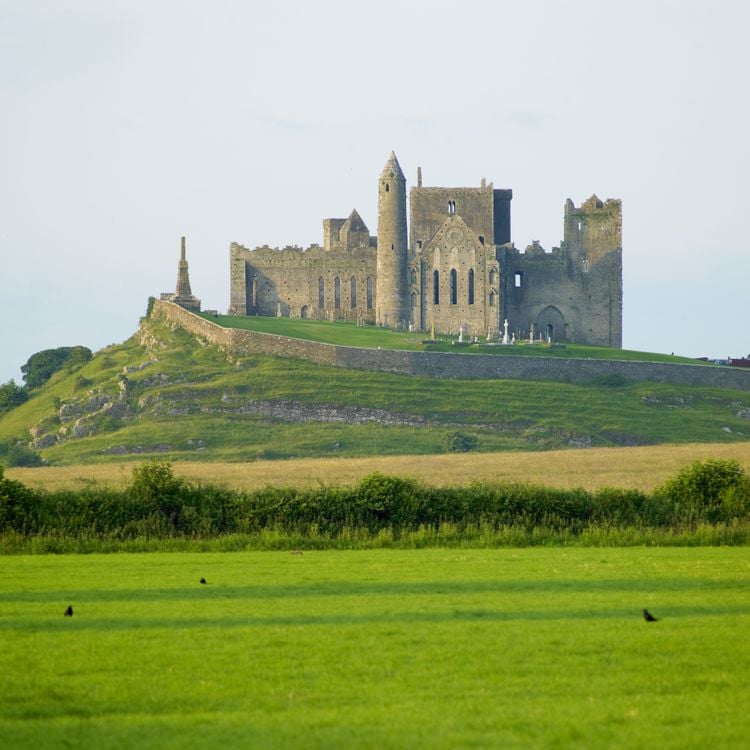
Rock of Cashel, County Tipperary, Ireland.
- © Richard Semik / ShutterstockThe Rock of Cashel’s history
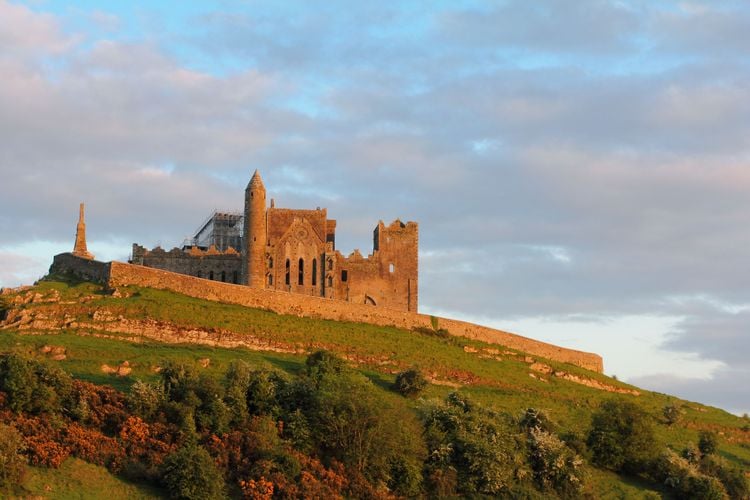
Rock of Cashel at sunset.
- © Captblack76 / ShutterstockExplore the site
Cormac’s Chapel and the cathedral are the main builds that make up the rock of Cashel. Cormac’s Chapel is particularly interesting as it has the only surviving Romanesque frescoes in all of Ireland. The chapel was consecrated in 1134, under king Cormac Mac Carthaigh. The chapel’s unique structure manages to seamlessly blend European architectural norms of the time with local traditions. The chapel’s north door is especially noteworthy, depicting a centaur hunting a lion on the carved tympanum. Major restoration works were undertaken recently to try and restore the chapel to its former glory, which is what makes a walk through the chapel such a captivating experience. You’ll also see a 28 metre high round tower that is the oldest structure on the rock. Dating back to around 1101, the tower was built using the dry stone method, a process in which stones are put together without any mortar binding them to one another. The cathedral is an aisleless building with a traditional cruciform structure. Built between 1235 and 1270, this Gothic style cathedral now stands almost in ruins, but that doesn’t take away from its aura of grandeur and spiritual potency. The Hall of the Vicars Choral, built in the 15th century, is one of the cathedral’s details that is worth keeping an eye out for. The cathedral was sacked by English troops during the Irish Confederate Wars in 1647 and many artefacts were looted or destroyed. The roof was also subsequently destroyed by Arthur Price, the Anglican bishop of Cashel in the 1730s. From all the way at the top of the rock, you’ll get an excellent view of County Tipperary, an upward trip well worth making while you’re there. Don’t forget to admire all the adorable sheep that are out living their best lives on the surrounding green pastures.
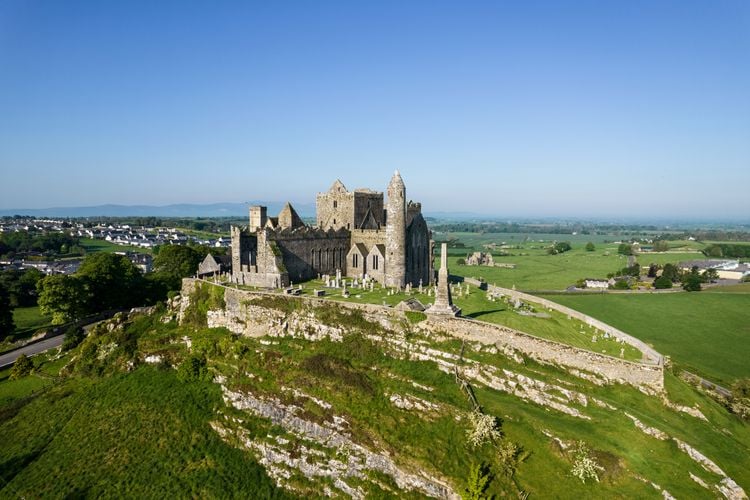
Rock of Cashel, Ireland.
- © D. Ribeiro / ShutterstockAround the Rock
Cashel is a lovely little heritage town full of small cafés and shops. It’s well worth a stop if you’re exploring the area.
Not far from the Rock of Cashel, you’ll find some more enchanting Irish heritage sites, such as the Swiss Cottage, Holycross Abbey and Cahir Castle.
Chez Hans is an excellent place to sit down and have an amazing meal after a long day of exploring Ireland’s fascinating medieval history. Only 100 metres from the Rock, Chez Hans is a modern yet classic restaurant located in a delightful setting. Be sure to reserve your table ahead of time.
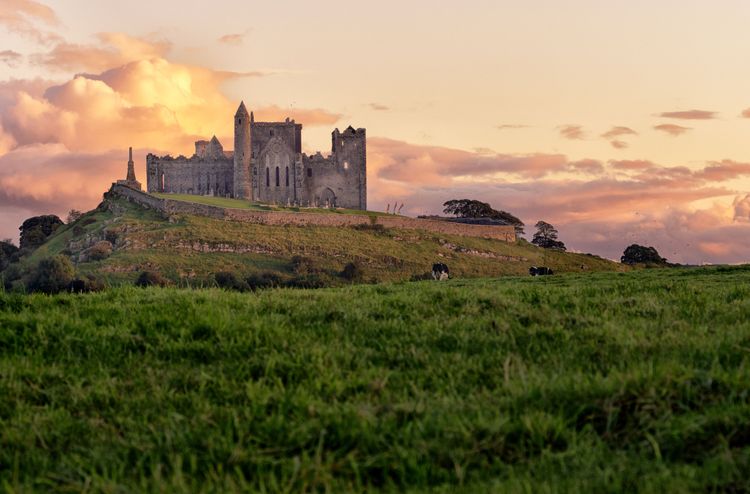
Rock of Cashel.
- © Piotr Machowczyk / ShutterstockPractical information about your visit
- Visitors must purchase tickets to access the premises. Booking online ahead of time is recommended as the site is rather popular. Tickets cost €8 for adults and €4 for children and students.
- From Mid March to Mid October, the site is open daily from 9am until 5:30pm, and from mid October to mid March, the site is open daily from 9am to 4:30pm. The site is closed from December 24th until December 26th included.
- There is an on site shop and guides are available in multiple languages.
- The site is free to access for persons with disabilities and their accompanying carers. Please feel free to contact the site at rockofcashel@opw.ie if you have any further questions about accessibility measures in place.
How to get to the Rock of Cashel?
By car:
- The castle is easy to access by car. You can find its location on Google Maps here. A public car park is available near the site.
By train:
- Local trains operate to Thurles, which is the nearest train station to the Rock of Cashel. Depending on where in Ireland you are coming from, this may be a solid option.
By bus:
- Visitors can hop on the X8 to Cashel and then walk 500m from the heart of Cashel town off the Dublin Road to reach the site. Please find out more about planning your bus journey here.
Some things to keep in mind for your visit:
- Wear sturdy shoes! The hilly terrain is rough and can be slippery and you’ll want to be wearing a reliable pair of shoes.
- Dogs are not allowed on the premises, only assistance dogs are allowed on the site.
Useful Links
Official Heritage Ireland website:
https://heritageireland.ie/places-to-visit/rock-of-cashel/?utm_source=easyvoyage
